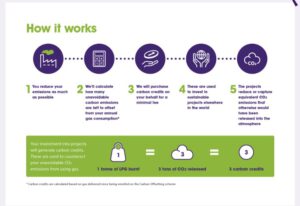The Need to Set Up a Method to Trade Carbon Credits
Set Up a Method to Trade Carbon Credits
Carbon credits are units of measurement that represent the reduction of greenhouse gases. They are traded in the voluntary market, which is set up to help meet a range of goals, including corporate net zero commitments and the international climate treaty’s target of keeping global warming below 2 degrees Celsius.
But despite their promise, carbon markets are a complicated and chaotic place. Buyers must grapple with uncertainty about pricing and the sourcing of trade carbon credits that are actually credible. And suppliers must navigate the risk that their projects may fail to deliver their claimed emissions cuts.

As a result, today’s voluntary carbon markets lack the liquidity needed to facilitate efficient trading and are plagued by inefficiency, inconsistencies, and fraud. The problem stems from the fact that carbon credits have many attributes that make them unique, and buyers value these attributes differently. In addition, carbon project types vary widely. For example, a forest-based project may produce different volumes of carbon credits than an afforestation or energy efficiency project.
The Need to Set Up a Method to Trade Carbon Credits
In order to resolve these problems, a variety of players must come together to make the voluntary market more robust and scalable. These include regulators, the financial community, environmental NGOs and business associations, exchanges and brokers, as well as standards and verification bodies.
The first step toward a more streamlined carbon market would be for exchanges to create standard products that ensure some basic specifications are met. For example, CBL offers standardized products labeled as Nature-based Global Emissions Offset (N-GEO) and ACX’s Global Nature Token, which ensure that credits trading under these labels are of a certain age, have been generated by a specific type of project and have been certified by a selected group of standards. Platts collects bids, offers and trades for these products and reports price indications during each trading day.
To further improve the quality of the voluntary market, there is also a need to set up a method for verifying carbon credits. The current process involves a third party, usually an environmental NGO or a company whose mission is related to the verification industry, to visit the project sites and confirm that emissions cuts are being accurately reported and recorded in the registry system.
Verra, a nonprofit organization founded in 2007 by business and environmental leaders to improve the quality of carbon trading, has been at the forefront of this effort. It has developed a verification process that includes accounting methodologies specific to each project type, independent auditing and a carbon credit registry. Its most popular standard, the Verified Carbon Standard, has registered and verified 1,750 carbon projects worldwide and has a proven track record of integrity and transparency.
A more robust, standardized carbon market could be a significant impetus for companies to set ambitious goals, invest in low-carbon technologies and drive growth through sustainable operations. The key to doing that, however, is finding effective ways for companies to signal their future demand for carbon credits and encourage developers to scale up supply.